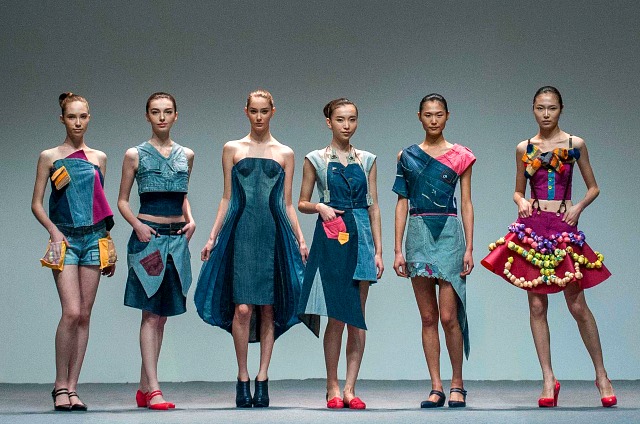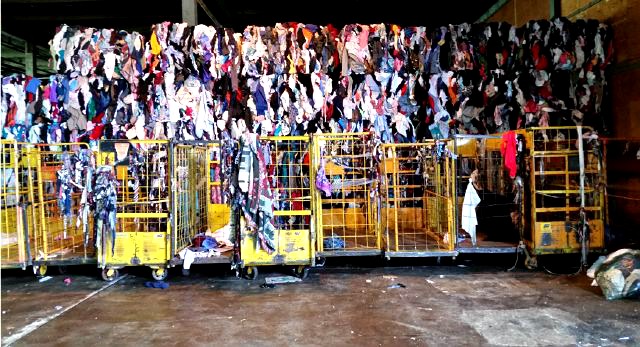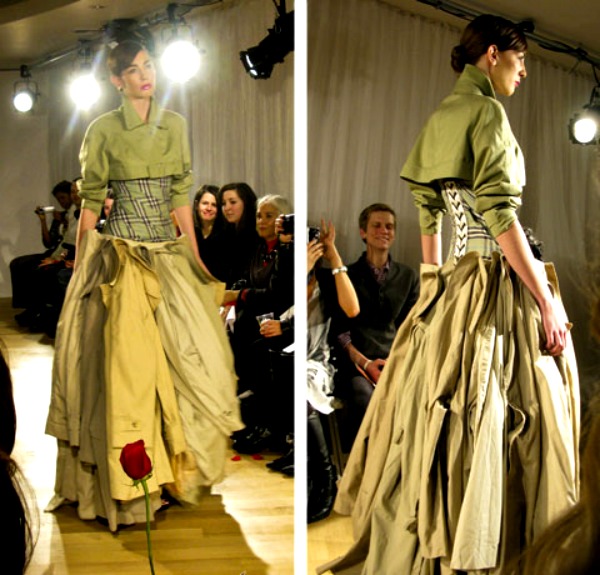
How many clothes do you have in your closet right now? If you’re typical you would say your closet is too small for all your clothes. Did you know we consume 60% more clothes annually than we did even 10 years ago? It’s the era of disposable clothing. Worn today, trashed tomorrow.
When garments are thrown away resources are wasted and currently so many garments are being produced and consumed that charities and rag trades can’t sell it all. The waste adds up especially in an industry that never had a small footprint; pesticides to grow cotton, land and water for raising crops and sheep (wool), fossil fuels to produce man made fibers, water, coal and chemicals to treat fabric including “sustainable” fabrics and the fact that man made fibers are not biodegradable and blends cannot be separated to recycle the plastics. And, of course all the labor to produce so much clothing is wasted.

But a garment at the end of it’s life cycle; produced, worn, discarded, for whatever reason, could begin again. Garments and parts of garments can be, and are by some designers, re-constructed into new fashion.
Reconstructing is making new clothes from previously worn garments. This can mean individuals who turn a dress into a skirt or a men’s shirt into a top to wear themselves. Reconstructing can also mean people producing multiples of one item to sell like skirts from old t-shirts. And it could even be couture level garments made from garments no longer wanted.
Many people view reconstructing garments strictly as a green or eco movement; a niche market. I see reconstructing garments as a creative challenge, as an experiment in living economically – within your means, sort of an anti-consumerism movement. I see it also as a lesson passed down from past generations to buy the best quality you can afford and then take care of it.
Most of us probably get the idea to reconstruct a garment when we see a piece of clothing we love but no longer wear. Maybe we love it for the fabric or the print or maybe for the sentimental value it has.
I have been given cast-off clothing from relatives and from friends. I’ve picked up items at clothing swaps and thrift stores and some of these pieces work for me as they are and some have been passed on to others but a few pieces sit in my sewing room because they have “potential”. I see another garment in them waiting for me to bring it out, like Michelangelo saw the angel in the marble and carved to set him free. Well, maybe, I’m not creating at quite such a poetic and artistic level.

Tips for Reconstructing Garments
- It’s helpful to have a dress form because reconstructing lends itself to draping.
- You can use a pattern or part of a pattern, for instance the bodice of a dress pattern. The original garment needs to have sections of fabric large enough for your pattern pieces.
- You can combine more than one garment.
- You can add fabric never used in a garment before. Example: make a purse out of a leather skirt but use fabric from your stash to line it.
- Look for quality fabrics when sourcing garments to transform
- Look for large, uncut panels of fabric on garments to use like full skirts and backs of large shirts.
Tips for Designing a Reconstructed Garment
- Study the garment’s original design and fabric to see what can be done to make it new. Look for interesting features you want to keep. The fabric type, construction and shape will influence the design of the new garment if you’re not planning to take the original garment completely apart to use strictly for it’s fabric.
- The original garment’s purpose can determine the second’s. Evening wear is easy to keep dressy and t shirts being reconstructed can stay casual but of course, you can take any fabric to a different level.
- Consider any size/fit changes needed to the original garment such as taking in or adding more width or length. Additional fabric can be incorporated into the new design.
- Look over the fabric of the original garment. Is it stained in places? Is it threadbare or worn anywhere? Moth holes? Work around these areas, repair them, or cover them with a design detail like ruffles or pockets.
- A garment can be changed with a simple adjustment such as shortening or lengthening it, changing the buttons, removing or adding details like pockets, collars and ruffles. And then there’s aways the option to beadazzel it.
How to Reconstruct a Garment
- Clean the garment if bought second hand or it’s very old (It may not withstand a wash, which will save you from using it).
- Take apart the entire original garment to use the fabric differently or to use with a flat pattern.
- OR take off only pieces that will not be part of the new garment like sleeves, front plackets, collars or patch pockets.
- Start building the new garment. Your design may change as you build it. This is where the dress form helps. On the form you can try out ideas before sewing by simply pinning pieces on or out of the way. The dress form lets you get a better visual of how these ideas will look, drape and or be sewn together. Use a volunteer or yourself and a mirror if you do not have a dress form.
- Use the same construction techniques as you would with a new garment when possible. Some seams may need to be hand stitched or top stitched instead or machine stitched.
- Add interfacing if needed as in new garment construction.
- Quilting will give strength and support to weak areas in the original garment or any textile needing it.
- Facings or bindings can be made from other fabrics or garments if you do not have enough fabric from the original garment.
- You may need to add facings to a seam in order to put in a zipper or a placket for buttons or to turn under to hem.
- Ruffles and smaller details can hide stains, patched areas, and use up smaller pieces of fabric.
Resources and Inspiration for Reconstructing a Garment
http://redress.com.hk/get-informed/sustainable-design-techniques/reconstruction/
This is a very informative pdf on reconstructing fashion it includes a different resource list then mine.
There are many reconstructed and repurposed garment projects on this Craftser forum
The blog Stitch-n-Thyme made a friend’s wedding dress from a 1970’s Chantilly lace wedding dress that the bride’s mom wore There are three post for this project: the start the update and the finished dress
Check this Recycled Couture fashion show, Eco Chic and Eco Fashion Week for some reconstructed couture and inspiration
And a beginner’s guide to repurposing clothing with projects like making reusable paper towels from old clothes.

